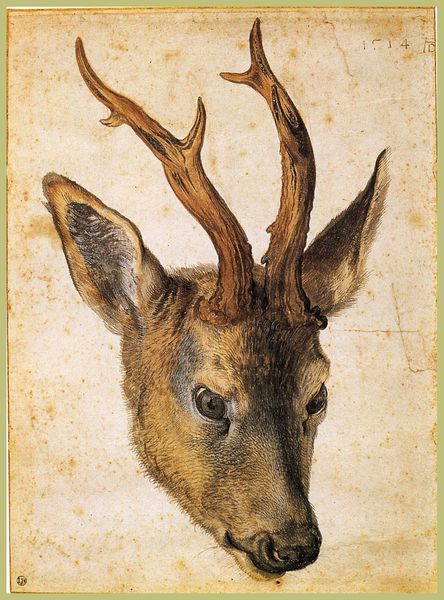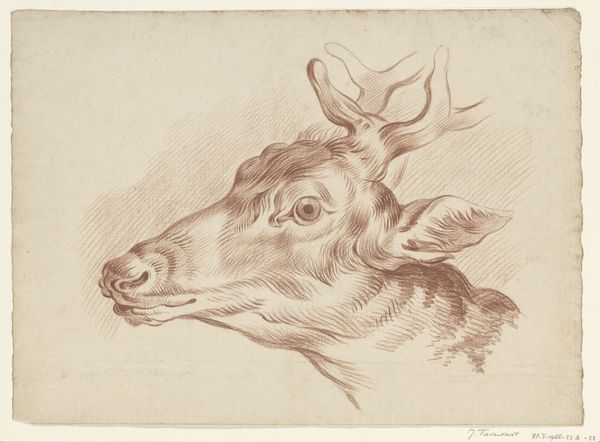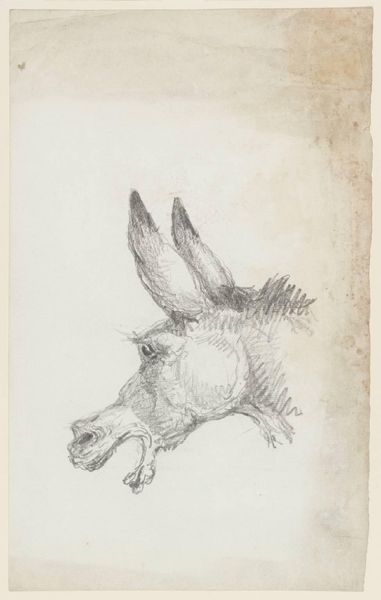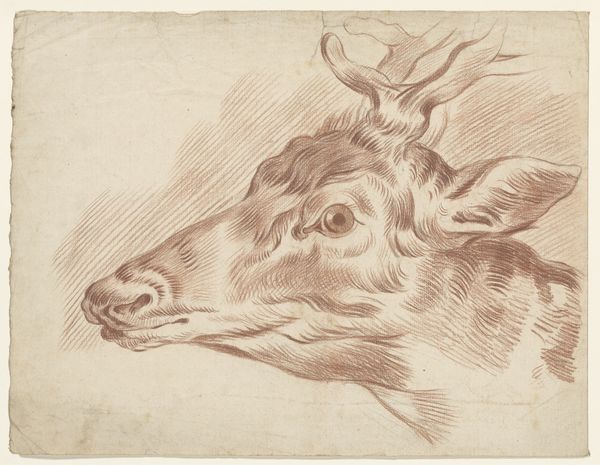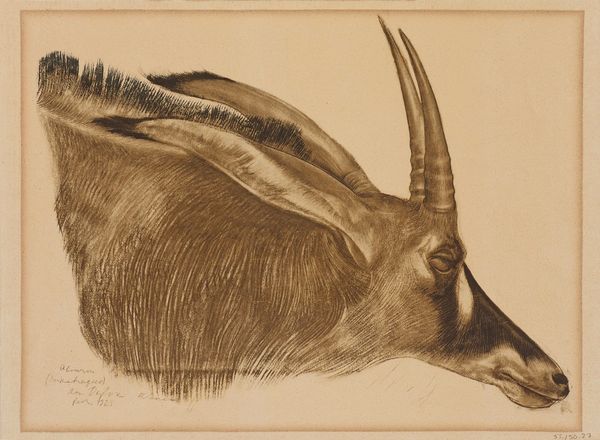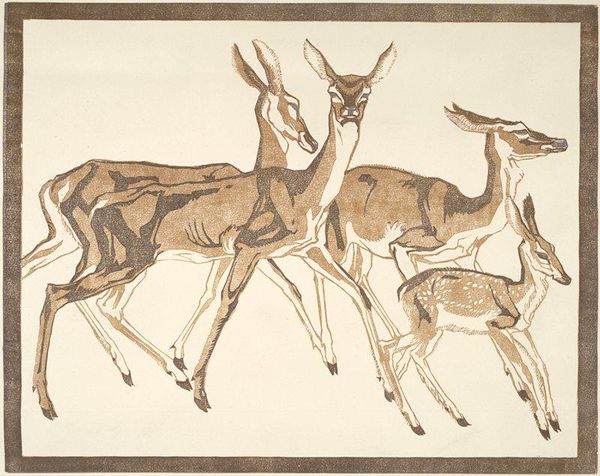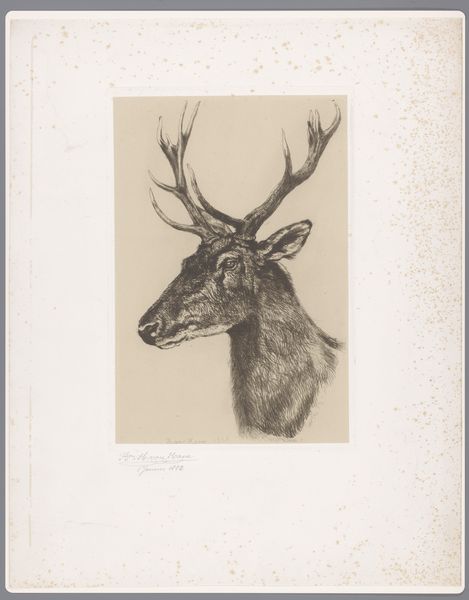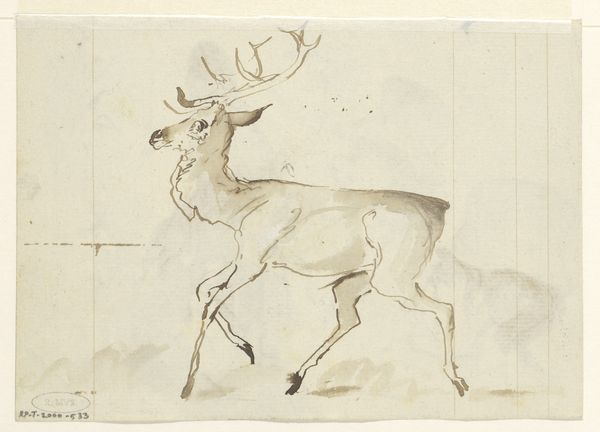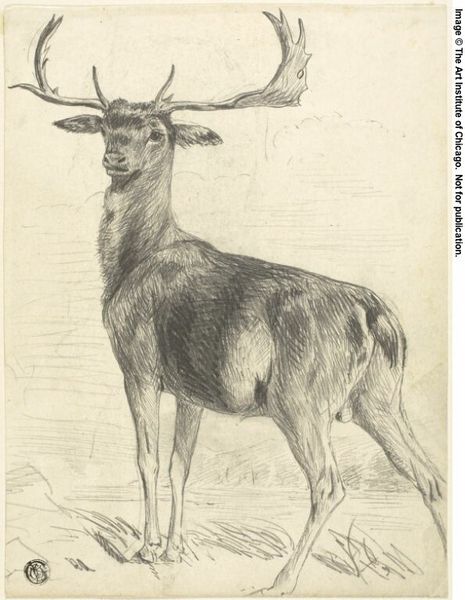
drawing, watercolor
#
portrait
#
drawing
#
landscape
#
charcoal drawing
#
figuration
#
watercolor
#
romanticism
#
animal portrait
#
portrait drawing
#
watercolour illustration
#
watercolor
#
realism
Dimensions: height 322 mm, width 345 mm
Copyright: Rijks Museum: Open Domain
Curator: This delicate drawing is entitled "Head of a Roebuck," made around 1800 by Wybrand Hendriks, utilizing watercolor and charcoal. Editor: My initial reaction is one of subdued gentleness. The soft watercolour palette contributes to this mood. Its scale is quite intimate, inviting close, personal inspection of its texture and minute detail. Curator: Hendriks, working during a period of increasing industrialization and changing social structures, presents the deer's head not as a trophy, but as an intimate portrait. We need to think about this image within a time that increasingly disrupted traditional social hierarchy. Editor: Exactly. And within the context of that time, animals had complex cultural weight. Depictions of animal heads, such as this one, often played a part in reinforcing those social strata, especially among land-owning aristocracies during periods of changing land usage policies. Is this portrait of this roebuck simply reflecting on animal aesthetics or is it commenting on social status? Curator: I find myself focused on the physical artistry. Look closely at the gradations of charcoal used to build form, giving the animal a soft three-dimensionality; it is a fascinating synthesis between meticulous observation and creative use of readily available resources. His economy of means is rather remarkable. It prompts a question regarding the relationship between artist, model, and the means of their joint labor. Editor: I am more compelled by its potential message. While the portrait can be read through the lenses of naturalism and skilled artistry, its true power might lie in a nuanced interpretation of its place within wider discussions regarding how societal class and politics frame ecological exploitation. What does it tell us about this artist’s political or philosophical position? Curator: It seems we diverge in our interpretation! I feel Hendriks simply sought to capture the simple beauty he perceived around him using the physical and social resources he had. Editor: And I contend we should broaden our consideration of its function in early Romantic representations and the complex sociopolitical realities reflected in what seem like direct representations of simple subjects. Curator: A perfect reminder of how historical context can reshape even the seemingly most transparent artwork, using techniques that continue to beguile us even today. Editor: Agreed. We often overlook these layers, but a deeper dive exposes a myriad of viewpoints within art and its past reception.
Comments
rijksmuseum about 2 years ago
⋮
The Haarlem artist Wybrand Hendriks tried to render this roebuck’s coat as realistically as possible with delicate dots and lines of the brush. Its dull grey tinge indicates that it is winter, because in the summer the fur is a light brown. The artist undoubtedly had ample time to study the animal; it is probably dead, lying flat on the ground with lifeless eyes.
Join the conversation
Join millions of artists and users on Artera today and experience the ultimate creative platform.
